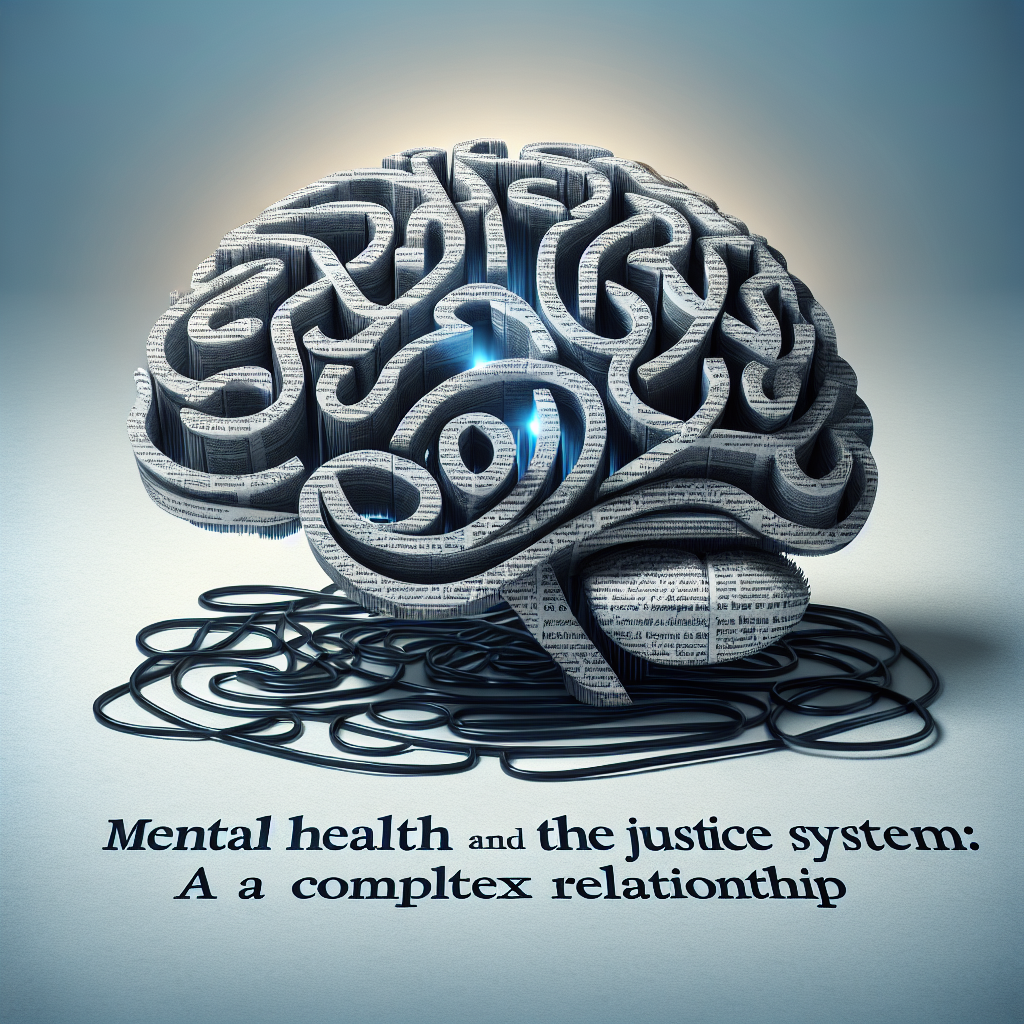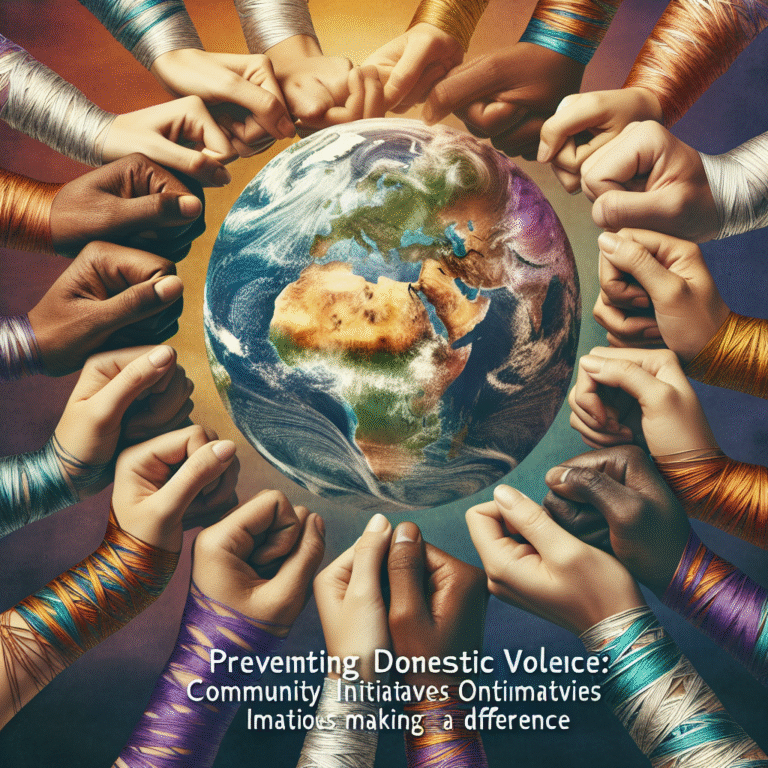
Introduction
In an era where mental health awareness is gaining traction, the intricate bond between mental health and the justice system remains both critical and often overlooked. Understanding this complex relationship is not only essential for advocates and policymakers but also for society as a whole. The alarming number of individuals with mental health conditions entering the justice system—often unprepared and unsupported—calls for immediate attention. This article delves into the myriad ways mental health intersects with the justice system, fraught with challenges yet brimming with opportunities for reform and improvement.
Understanding the Landscape
The Overlap of Psychiatric Disorders and Criminal Behavior
At the core of the relationship between mental health and the justice system lies a stark reality: individuals grappling with mental health issues are disproportionately represented in the criminal justice system. Research indicates that over 20% of inmates in the U.S. have a mental health condition, which is notably higher than in the general population.
Key Data at a Glance
| Statistic | Percentage |
|---|---|
| Inmates with any mental health disorder | 20% |
| Inmates with schizophrenia or bipolar disorder | 3-4% |
| Recidivism rate for individuals with mental illness | 60% |
The tableau underscores a significant concern: these individuals often cycle through mental health crises, incarceration, and sometimes violent confrontations with law enforcement.
Case Study: The Tragic Story of Kalief Browder
One poignant example that highlights the dire consequences of this complex relationship is the case of Kalief Browder, a young man who spent three years at Rikers Island for allegedly stealing a backpack. Browder, who battled mental health issues prior to his arrest, faced punitive measures rather than receiving the necessary care. His story tragically culminated in his suicide, shedding light on how the justice system can fail those who need help the most.
This case exemplifies the urgent need for reform by illustrating how mental health issues can deteriorate while individuals remain entangled in a system unprepared to offer support.
Challenges within the System
Stigma and Misunderstanding
Stigmas surrounding mental health often cloud perceptions of justice and fairness. Many law enforcement officials and court personnel lack training in mental health awareness, leading to misdiagnoses and mishandlings. This creates barriers not only for individuals seeking help but also for those advocating for systemic change.
Lack of Resources
Another significant challenge is the glaring lack of resources dedicated to mental health treatment within the justice system. Jails and prisons frequently act as the largest mental health facilities in many states, yet they are ill-equipped to address these issues.
Case Study: The Mental Health Court Model
In response to these challenges, innovative approaches like Mental Health Courts have emerged across the country. These specialized courts aim to divert individuals from traditional judicial proceedings into treatment programs tailored to their needs. For example, the Miami-Dade County Mental Health Court has reported reduced recidivism rates, helping individuals reintegrate into society more successfully.
This model exemplifies how targeted interventions can shift the focus from punishment to rehabilitation, particularly for those struggling with mental illness.
Solutions and Opportunities for Improvement
Training Law Enforcement
Training police officers to responsibly handle encounters with individuals suffering from mental health conditions can dramatically alter outcomes. Programs promoting de-escalation and mental health crisis intervention equip officers with the tools necessary to respond with empathy rather than aggression.
Legislation and Policy Changes
Passage of laws aimed at mental health reform is critical to fostering a more equitable justice system. Legislative advocacy has begun to show promise; for instance, the Mental Health Parity and Addiction Equity Act of 2008 was a pivotal step in standardizing mental health care with physical health care.
Charting Progress in Legislation
| Year | Legislation | Impact |
|---|---|---|
| 2008 | Mental Health Parity Act | Increased coverage for mental health issues |
| 2016 | 21st Century Cures Act | Expanded access to mental health resources |
| 2020 | COVID-19 Response Act | Included mental health provisions |
This chart illustrates a growing recognition of the need for mental health integration within federal policy.
Expanding Community-Based Programs
Community-based mental health programs are essential to provide support before individuals become entangled in the justice system. Initiatives like crisis stabilization units and mobile crisis teams provide targeted help during critical moments, reducing the need for incarceration.
Case Study: Crisis Intervention Teams
A successful model from Memphis, Tennessee—known as the Crisis Intervention Team (CIT)—illustrates how community-led efforts can bridge the gap between mental health services and law enforcement. This program trains officers to recognize and engage with individuals experiencing mental health crises compassionately, resulting in lowered arrest rates and better treatment outcomes.
Conclusion
The relationship between mental health and the justice system is undeniably complex, characterized by both pressing challenges and promising opportunities for reform. A multifaceted approach that combines training, policy changes, and community engagement can pave the way for a more compassionate and effective system. Transforming the narrative surrounding mental health can create a justice system that not only preserves public safety but also ensures dignity and support for all individuals.
As we reflect on the systemic issues and the need for reform, it’s essential to remember that every effort counts. Collective advocacy for mental health awareness and compassion within the justice framework not only benefits those who are imprisoned but society as a whole.
FAQs
1. How prevalent is mental health illness among incarcerated individuals?
Over 20% of inmates have a mental health condition, significantly higher than the general population, illustrating a pressing need for reform.
2. What are Mental Health Courts, and how do they operate?
Mental Health Courts are specialized court systems designed to divert individuals with mental health issues into treatment instead of traditional punitive measures, aiming to reduce recidivism rates.
3. What role does law enforcement play in mental health crises?
Law enforcement can either escalate or de-escalate a situation, making officer training in mental health awareness crucial to improving outcomes for individuals in crisis.
4. How can community programs help prevent incarceration?
Community-based mental health programs provide immediate support, reducing the need for law enforcement intervention and promoting early intervention.
5. What legislative efforts have been made to address mental health in the justice system?
Legislative efforts like the Mental Health Parity Act and recent COVID-19 response measures have aimed to improve mental health resource access, highlighting the need for ongoing advocacy.
By taking these insights and integrating them into our understanding of mental health and the justice system, we can work toward a more supportive and effective pathway for those in need.


















